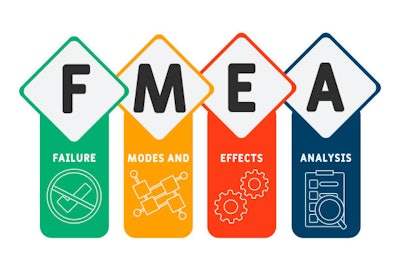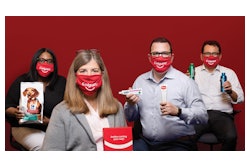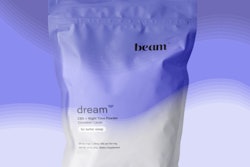
It further evaluates the cause of failure, the likelihood of failure, how failure is to be detected, the severity of the effect(s), corrections/preventions, and the assignment of responsibilities.
The FMEA model can be applied to any component of the systems concept of packaging, including: raw materials, converting, manufacturing, design, testing, filling, unitizing, distribution, sustainability, and disposal. Of those components, design is most often cited in product liability suits, and the remainder of this article will address FMEA from that perspective.
FMEA is a multi-discipline, multi-faceted team undertaking. Members thus need to operate under the right analytical framework, starting with the question, “what does failure mean as applied to package design?”
It means that the design falls short in fulfilling one or more of its functions, namely containment, protection, communication, or convenience/utility. How might the design fail containment, whether by an all-at-once escape of the contents or by gradual leak? How the design might fail to protect the product’s integrity is a certain consideration, but so is protection of property and people. How might the design fail communication, by not conveying needed safety information? How might the design fail convenience/utility by not making the user experience as safe as feasible?
All of the preceding failures are defects, but of varying effects. Defects are classified as minor, major, and critical. A minor defect is slight, cosmetic, and otherwise does not affect function. A major defect does affect function. A critical defect is hazardous/dangerous and can cause injury and death. Critical defects are the type most likely to lead to product liability suits. That’s not to suggest that the other types shouldn’t be taken seriously, because minor and major defects, committed consistently, result in loss of customers.
Imaginative, probing thought is called for in identifying potential failure modes. That’s especially true of team members whose familiarity with a package design might cloud their objectivity. And analysis should not stop with the identification of a “worst case scenario,” because lesser scenarios can generate lawsuits. The question should be, what failures are reasonably foreseeable along the spectrum of possibilities? Such thinking should include reasonably foreseeable product misuse by consumers.
For a given failure mode, causes, likelihood, detection, severity, correction/prevention, and responsibilities are interrelated. Take, as an example, a failure mode deemed to be caused by a critical defect. If the critical defect is a design defect—meaning inherent to the design—then cause, likelihood, detection, and severity will have been answered. Corrections/prevention should be pursued in accordance with the three-step hierarchy of safety engineering. Step One is to eliminate the defect through redesign. Step Two is to implement safeguards if elimination isn’t feasible. Step Three is to compose effective warnings against whatever survives the preceding steps. At the end of the steps, the package must be judged to be reasonably safe. Otherwise, it should not be put into the commercial stream.
With failure modes that are manufacturing defects, cause, detection, and correction/prevention reside in quality assurance measures, which, themselves, should undergo separate FMEAs. Severity can range, including effects that trigger lawsuits.
With failure modes that are marketing defects, the cause, detection, and correction/prevention require knowing what constitutes an adequate warning. An inadequate warning is equivalent to there being no warning. Warnings need to be evaluated on content and format, i.e. what’s communicated and how it’s presented. Content should consist of a signal word (e.g. WARNING), identification of the hazard, instructions on avoiding the hazard, and emergency contact information. Format, as to placement, should render the warning conspicuous among surrounding graphics and text. Likelihood and severity should be the main determinants as to how inclusive a warning should be, given the impracticality of warning about every conceivable possibility.
Responsibilities should be assigned in accordance with associated expertise. Failures due to design defects and those due to manufacturing defects should be assigned to technical personnel. Failures due to marketing defects can also require technical expertise, in addition to marketing expertise and legal expertise.
If a FMEA wasn’t done before a design was commercialized, it can be done subsequently. FMEA is not a one-and-done proposition; the same design should be reevaluated if changing circumstances warrant. Neither is FMEA a stand-alone proposition; an evaluation performed on design can prompt evaluations in other components of the packaging system. It all makes for a considerable investment of resources. However, it can prove worth it to a company that finds itself named as Defendant in a lawsuit.
Sterling Anthony, CPP, is a consultant specializing in packaging, marketing, logistics, and human-factors. He also is a former faculty member at the Michigan State University School of Packaging. His contact information: 100 Renaissance Center, Box-176, Detroit, MI 48243; telephone 313-531-1875; [email protected]; www.pkgconsultant.com.





















